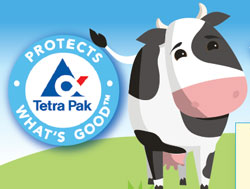 Good news for athletes, milk-lovers and everyone! Fat-free chocolate milk beat out carbohydrate sports drinks at helping to rebuild and refuel muscles after exercise, researchers report.
Good news for athletes, milk-lovers and everyone! Fat-free chocolate milk beat out carbohydrate sports drinks at helping to rebuild and refuel muscles after exercise, researchers report.
The combination of carbohydrates and protein in low-fat chocolate milk appears to be “just right” for refueling weary muscles, says William Lunn, PhD, an exercise scientist at the University of Connecticut.
“It’s not just a dessert item, but it’s very healthy, especially for endurance athletes,” Lunn tells WebMD.
The research involved eight male runners in good physical shape who ate a balanced diet for two weeks. At the end of each week, they took a fast paced, 45-minute run.
Following each run, the men drank either 16 ounces of fat-free chocolate milk or 16 ounces of a carbohydrate-only sports beverage with the same number of calories.
Post-exercise muscle biopsies showed increased skeletal muscle protein synthesis — a sign that muscles were better able to rebuild — after the milk drink, compared with the carb-only beverage.
Additionally, drinking fat-free chocolate milk led to a higher concentration of glycogen, or muscle fuel, in muscles 30 and 60 minutes after exercise, compared with the sports drink. Replenishing glycogen after exercise helps future performance, Lunn says.
The findings were presented at the American College of Sports Medicine conference in Baltimore this week.
While only men were studied, one would expect women to gain the same post-workout benefits from chocolate milk, he says.
While the studies were small, there’s no reason not to reach for fat-free chocolate milk after your next workout, says sports nutritionist Nancy Clark, MS, RD, of Healthworks Fitness Center in Chestnut Hill, Mass.
“Athletes can consider it an inexpensive nutritional alternative to engineered sports beverages for help with post-workout recovery,” she tells WebMD.
The studies were supported by a grant from the National Dairy Council and National Fluid Milk Processor Promotion Board.
Source: WebMD
This study was presented at a medical conference. The findings should be considered preliminary as they have not yet undergone the “peer review” process, in which outside experts scrutinize the data prior to publication in a medical journal.
 Would you like to learn more about National Milk Producers Federation “Foundation of the Future?” Then plan to participate in a webinar on Friday, June 11, 2010 at 12 noon Eastern/9 am Pacific. NMPF will explain aspects of the “Foundation for the Future” proposal.
Would you like to learn more about National Milk Producers Federation “Foundation of the Future?” Then plan to participate in a webinar on Friday, June 11, 2010 at 12 noon Eastern/9 am Pacific. NMPF will explain aspects of the “Foundation for the Future” proposal.




 Susainable dairy package manufacturer
Susainable dairy package manufacturer 